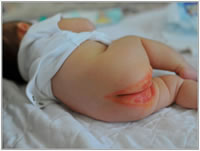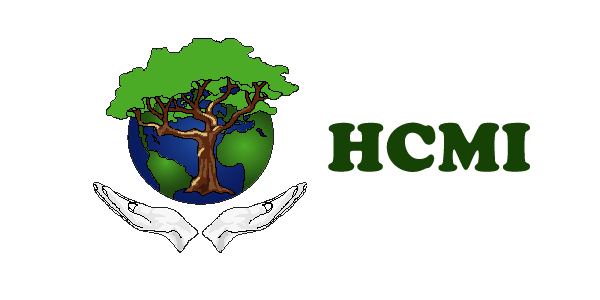
If your baby's diaper area looks irritated and red, chances are he has diaper rash. His skin may also be a little puffy and warm when you touch it. Diaper rash may be very mild - a few prickly red spots in a small area - or quite extensive, with tender red bumps that spread to your baby's tummy and thighs. There's no need to panic, dealing with diaper rash is quite normal and considered part of baby care, especially in the first year or so of your baby's life.
Diaper rash can be caused by anything from a new food to your baby's own urine. Here are the most common culprits:
- Typically, the number one cause of diaper rash is wetness. Even the most absorbent diaper leaves some moisture on your baby's delicate skin. When your baby's urine mixes with bacteria from his stool, it breaks down and forms ammonia, which can be very harsh. If this is the cause, the solution is easy, be sure to change the diaper often. Consider allowing the baby to air dry for a few moments after cleaning him/her before applying the next diaper. Use organic wipes as commercial ones have alcohol and propylene glycol which can burn the skin and spread bacteria.
- Your baby's diaper rash may be the result of reactive sensitivity, for example, his diaper rubbing against his skin. This may definitely be the case if he's extra sensitive to chemicals like the fragrances in a disposable diaper or the detergents used to wash a cloth diaper. It could also be that a lotion or powder you're using for diaper duty doesn't agree with your baby's delicate skin. To rule this option out, use a different kind of diaper, wipe, powder or cream for a week. Organic is a good option.
- I have found food allergies to be the number one cause of diaper rash, assuming the parent is a diligent diaper changer. It is common for babies to get diaper rash when they start eating solid foods or are introduced to a new food. If the child is breast feeding, the mother is likely eating something that does not agree with the baby. Formula fed babies are known to get more rashes. I would not feed formula to any child I love, consider raw goat milk or organic canned goat milk instead. If the baby is eating food, look at eliminating gluten, then dairy as the most common culprits. If neither of those appears to make a difference, begin eliminating one specific food at a time until you identify the culprit. You will need at least 10 days of elimination to know for sure. I suggest you use the Allergy Remedy to boost the baby's ability to process foods without a reaction.
- Infection. The diaper area is warm and moist - just the way bacteria and yeast like it. So it's easy for a bacterial or yeast infection to flourish there and cause a rash, especially in the cracks and folds of your baby's skin. If the skin has blisters, open sores, patches of scabs with oozing fluids or moderate bleeding, there may be a secondary infection caused by some bacteria or virus. Keep your baby as clean and dry as possible. After changing and cleaning them, spray Colloidal Silver all over the infected area. Do not give it to him internally, just externally. Use it after every change. Allow the Silver to dry for a moment, then spray Liquid Detox on it. Additionally, find a good baby probiotic and use it as directed. You should be able to find the Probiotic and Colloidal Silver at a local health food store.
- Babies on antibiotics (or whose breastfeeding mothers are on antibiotics) sometimes get yeast infections because antibiotics reduce the number of healthy bacteria that help keep yeast from growing as well as the harmful bacteria they're meant to destroy. Antibiotics can also cause diarrhea, which can contribute to diaper rash. Use a good Probiotic for baby (and mother if she is the one on antibiotics) and Liquid Detox internally for both baby and mother. Take a few drops several times a day orally for baby and a dropperfull several times a day for mother.
